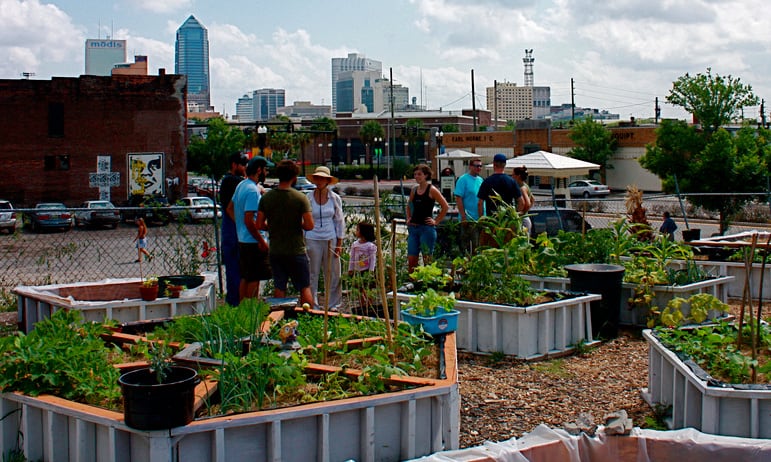City Blooming Can Be Fun For Everyone
City Blooming Can Be Fun For Everyone
Blog Article
The smart Trick of City Blooming That Nobody is Talking About
Table of ContentsSee This Report about City Blooming3 Simple Techniques For City BloomingCity Blooming - An OverviewThe Best Guide To City BloomingHow City Blooming can Save You Time, Stress, and Money.
Intrigued in expanding food for sale in the City of Chicago? Below is a listing of regularly asked inquiries concerning the policies and policies that cultivators should think about when planning a metropolitan agriculture task.
The zoning change does not customize any other codes handling composting, building authorizations, acquiring or leasing City owned residential property, business licenses or environmental contamination. There are existing codes that regulate these concerns and they continue to be in complete result and might apply to your project. Community gardens are normally possessed or managed by public entities, civic organizations or community-based organizations and maintained by volunteers.
Urban ranches grow food that is intended to be marketed, either on a nonprofit or for-profit basis. Due to their business function, metropolitan ranches need an organization permit.
The Greatest Guide To City Blooming
Composting is enabled but only for plant material that is created and utilized on site. The amount of garden compost material can not surpass 25 cubic yards at any given time according to the standards in 7-28-715 of the City's Municipal Code. Yes. Since the soil at the majority of new yard websites needs changing, compost, soil, wood chips, or other products can be gotten to create or improve the expanding area - sustainable gardening.

If a building license is needed then the hoophouse will certainly be considered an accessory building. You can discover even more regarding the structure license demands by calling the Department of Buildings. The 25,000-square-foot size limitation is intended to stop a solitary area garden from controling a provided block or diminishing the block's existing residential or commercial character.
The limit does not use to yards situated in Public Open Area (POS) areas. Can there be even more than one neighborhood garden that is 25,000 square feet on a single block? Fence is not called for, however, gardens that have big auto parking locations may be called for to set up secure fencing or other landscape design attributes.
City Blooming Can Be Fun For Anyone
B1 & B2 districts require that all business use tasks be performed inside. Is fence required for metropolitan ranches? Fences might be called for, along with landscape design and screening, for specific auto parking locations and outdoor work or storage locations depending on area and the particular activity taking place.
Yes. Urban ranches require building licenses and zoning authorizations before construction. Other kinds of city review might be called for depending on particular frameworks, tasks, size, landscaping, licensing, public heath and stormwater monitoring concerns. A number of these demands are identified in the project design or permitting procedure, however, the candidate might be liable to independently identify particular licenses or allows that might be called for.
Yes. The type of license is established by what is happening at the website. The Department of Company Matters and Consumer Protection can help establish the particular sort of company license that's needed. Yes. Off road auto parking is required for most industrial projects in Chicago. The required variety of auto parking areas is based Recommended Reading upon the variety of staff members working with website and not the square video footage of the growing room.
All About City Blooming

A metropolitan ranch can market garden compost product produced on website, however, the procedure needs to comply with the regulations in 7-28-715 of the Chicago Municipal Code. Aquaponic systems are permitted indoors on urban ranches in several zoning areas.
As much as five hives or nests of honey bees might be kept as an accessory usage. Beekeepers should register with the Illinois Division of Farming. For additional information concerning the suggested zoning change you might contact the Department of Housing and Economic Development, Bureau of Planning and Zoning at 312.744.8563.
, which takes place in country areas at the side of residential areas.
Getting My City Blooming To Work
It can entail an activity of organic growers, "foodies" and "locavores", that seek to create social networks based on a common ethos of nature and area holism. These networks can create by means of formal institutional support, becoming incorporated right into regional town as a "shift town" activity for sustainable city development.
The extra straight access to fresh veggie, fruit, and meat items that may be realised with city agriculture can enhance food safety and security and food safety and security while reducing food miles, causing lower greenhouse gas emissions, thus adding to environment adjustment reduction. Some of the very first evidence of metropolitan farming comes from Mesopotamia.
Report this page